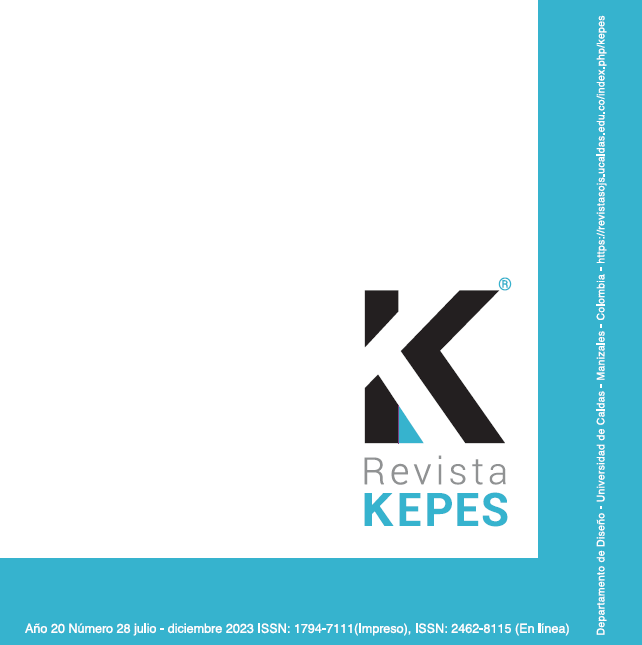Autores/as
Resumen
Este artículo aborda una incompatibilidad que, aunque no sea aparente, está implícita en numerosos ámbitos de la producción mediática contemporánea. La narrativa, en su definición clásica, se fundamenta en la linealidad, la causalidad y la determinación. Por otro lado, las bases de datos digitales, que constituyen el sustento de los nuevos medios, trascienden de estructuras jerárquicas o lineales. De este último aspecto se desprenden propiedades como la automatización, la programación y, en general, la interactividad. Lo anterior implica que tanto la narrativa como los medios digitales se originan desde lógicas distintas, lo cual genera un escenario interesante: aunque existan intenciones de interconectarlos, el desarrollo en los campos de la narratología y de los medios digitales parte de posibilidades intrínsecamente opuestas. Por tanto, el objetivo de la investigación que fundamenta este artículo consistió en contribuir a la precisión teórica y conceptual de la relación entre medios digitales y narrativa, explorando sus potencialidades, limitaciones y puntos de convergencia. El estudio se articuló mediante una metodología cualitativa con enfoque teórico, iniciando con la identificación de conceptos clave en la relación entre medios digitales y narrativa. Posteriormente, se entrelazaron las posturas de académicos de ambas áreas y, finalmente, se analizaron los conceptos identificados en una obra de nuevos medios con carácter narrativo, específicamente el videojuego Death Stranding (2019). El principal hallazgo radicó en que los conceptos indispensables para establecer puentes teóricos entre la narrativa y las propiedades de los medios digitales fueron aquellos relacionados con la experiencia involucrada en ambos campos. Los conceptos en cuestión —tales como inmersión, agencia, espacio navegable y encarnamiento, entre otros— provienen de áreas tan diversas como la narratología, la teoría de nuevos medios, la posfenomenología y los estudios de videojuegos, pero encuentran en el concepto de experiencia un posible punto de confluencia.
Palabras clave
Citas
Barthes, R. (1966). Introducción al análisis estructural de los relatos. En B. Dorriots (Ed.), Revista Communications, 8.
Bayliss, P. (2007). Beings in the game-world: characters, avatars, and players. En Proceedings of The 4th Australasian conference on Interactive entertainment (pp. 1-6). RMIT University,Melbourne, Australia. https://dl.acm.org/doi/10.5555/1367956.1367960
Calleja, G. (2011). In-Game: From Immersion to Incorporation. The MIT Press.
Caracciolo, M. (2014). The Experientiality of Narrative: An Enactivist Approach. Gruyter.
Caracciolo, M. y Kukkonen, K. (2021). With Bodies: Narrative Theory and Embodied Cognition. Oxford University Press.
Cardoso, P., Oliveira, E., & Silva, I. (2019). Narrative and Gameplay: The Balanced and Imbalanced Relationship between Dramatic Tension and Gameplay Tension. En Proceedings of the 9th International Conference on Digital and Interactive Arts (ARTECH 2019) (pp. 1-8). Association for Computing Machinery. https://doi.org/10.1145/3359852.3359906
Casebier, A. (1991). Film and Phenomenology: Toward a Realist Theory of Cinematic Representation. Cambridge University Press.
Cohen, J. (2001). Defining Identification: A Theoretical Look at the Identification of Audiences With Media Characters. Mass Communication and Society, 3(4), 245-264.
Dourish, P. (2001). Where the Action is the Foundations of Embodied Interaction. The MIT Press.
Fludernik, M. (1996). Towards a ‘Natural’ Narratology. Routledge.
Fludernik, M. (2009). An introduction to Narratology. Routledge.
Grau, O. (2003). Virtual Art: From Illusion to Immersion. The MIT Press.
Herman, D. (1997). Scripts, Sequences, and Stories: Elements of a Postclassical Narratology. PMLA, 112(5), 1046-1059. https://doi.org/10.2307/463482
Herman, D. (1999). Narratologies: New Perspectives on Narrative Analysis. Ohio State UniversityPress.
Herman, D. (2009). Basic Elements of Narrative. Wiley-Blackwell.
Kukkonen, K. (2022). The Experience of Narrative: Aesthetics and Embodiment. En The Routledge Companion to Narrative Theory (pp. 397-408). Routledge.
Landow, G. (1991). Hypermedia and literary studies. MIT Press.
Machado, A. (2009). El Sujeto en la Pantalla: La aventura del espectador, del deseo a la acción. Gedisa.
Manovich, L. (2006). El lenguaje de los nuevos medios de comunicación. Ediciones Paidós.
Merleau-Ponty, M. (1993). Fenomenología de la percepción. Planeta Agostini.
Moulthrop, S. (1994). Hypertext and the Dreams of a New Culture. Johns Hopkins University Press.
Murray, J. (1997). Hamlet en la Holocubierta: El futuro de la narrativa en el ciberespacio. Ediciones Paidós.
Paez, D. (23 de agosto de 2020). Coined: How Gaming Turned a Hindu Concept Into the Internet’s Most Common Feature. Inverse. https://www.inverse.com/gaming/avatar-meaning-originsvideo-games
Ready, J. L. (2023). Immersion, Identification, and the Iliad. Oxford University Press.
Reyes, J. (9 de diciembre de 2021). Sony Now Owns Patent For Death Stranding’s PathBuilding Feature. https://www.gamespot.com/articles/sony-death-stranding-patentapproved/1100-6498812/
Ryan, M.-L. (2004). La narración como realidad virtual: La inmersión y la interactividad en la literatura y en los medios electrónicos. Ediciones Paidós.
Ryan, M.-L. (2006). Avatars of Story. University of Minnesota Press.
Ryan, M.-L. (2007). Toward a definition of narrative. En D. Herman (Ed.), The Cambridge Companion to Narrative (pp. 22-36). Cambridge University Press.
Ryan, M.-L. (2018). Narrative mapping as cognitive activity and as active participation in storyworlds. Frontiers of Narrative Studies, 4(2), 232-247.
Sobchack, V. (1991). The Address of the Eye: A Phenomenology of Film Experience. Princeton University Press.
Sobchack, V. (2004). Carnal Thoughts: Embodiment and Moving Image Culture. University of California.
Stang, S. (2017). Player Agency in Telltale Games’ Transmedia and Cross-Genre Adaptations. Cinephile, 11(3), 19-24. http://cinephile.ca/wp-content/uploads/Cinephile-11.3-Final1.pdf
Stang, S. (2019). “This Action Will Have Consequences”: Interactivity and Player Agency. Game Studies, 19(1). http://gamestudies.org/1901/articles/stang
Szolin, K., Kuss, D. J., Nuyens, F. M. y Griffiths, M. D. (2023). “I am the character, the character is me”: A thematic analysis of the user-avatar relationship in video games. Computers in Human Behavior, 143, 107694.
Wolf, M. (2010). Theorizing Navigable Space in Video Games. En Logic and Structure of the Computer Game (pp. 36-62). Potsdam University Press

 PDF
PDF
 FLIP
FLIP























